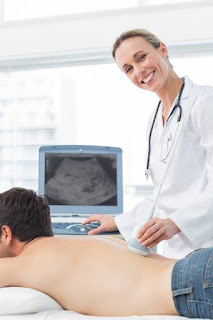How physical therapy can help treat the recurrence of back pain
Failed back surgery syndrome (FBSS) is a term used to describe patients that haven’t had a successful result with back surgery or spine surgery and continue to experience debilitating back pain post-surgery. 5% of all patients who undergo spinal surgery will experience recurrences of back pain. Spinal surgery is recommended for patients in order to accomplish one of 2 goals:
- Decompress a nerve root that is pinched
- Stabilize a painful joint.
Unfortunately, spinal surgery isn’t a cure-all for all patient’s back pain. Therefore, it’s important for patients who experience pain post spinal surgery to work with a physical therapist in order to identify non-invasive pain relieving modalities that can lower their incidence of pain.
Chronic pain post spinal surgery can lead to additional problems including:
- Inability to perform daily and job tasks
- Increased medical care costs
- Over reliance on oral pain medication
Physical Therapy Modalities for the Treatment of Frequent Back Pain
- Whirlpool Therapy: Allowing patients to relax in warm, agitated water such as in a whirlpool baths is a great form of hydrotherapy. Research has found that hydrotherapy tubs are an effective non-invasive modality in the treatment of pain.
- Cold-Compression Therapy: The innovation of a cold compression device marries the analgesic benefits of cold therapy with the inflammation reducing features of compression. When a patient is suffering back pain, it’s important to have the ability to treat both. Inflammation can cause compression of the nerves in the back which leads to pain. With the cold-compression device with back wrap, practitioners can reduce both inflammation of the nerve and pain levels.
 Low-Level Laser Therapy (LLLT): LLLT is a non-invasive treatment that generates a single wavelength of light that creates biostimulation. It is believed that LLLT is able to penetrate connective tissue thereby increasing tissue repair and decreasing inflammation. LLLT helps decrease any inflammation on impinged nerves in order to reduce pain. (source)
Low-Level Laser Therapy (LLLT): LLLT is a non-invasive treatment that generates a single wavelength of light that creates biostimulation. It is believed that LLLT is able to penetrate connective tissue thereby increasing tissue repair and decreasing inflammation. LLLT helps decrease any inflammation on impinged nerves in order to reduce pain. (source)- Core Strengthening: All patients who experience back pain and particularly those post-surgery have core weaknesses. It is because of this core weakness that the muscles of the back are over-used which can lead to injury and pain. Back pain patients in rehabilitation must strengthen their core abdominal muscles using therapeutic exercises in order to avoid future recurrence of back pain.
- Ultrasound with Therapeutic Exercise: Research supports the idea that ultrasound therapy devices used in conjunction with therapeutic exercise has a positive impact in lowering chronic low back pain and reducing its frequency. (source)
There are more than 20 treatment modalities (and multiple subcategories) of physical therapy modalities which can be used in the treatment of back pain. It is because of the effectiveness of physical therapy modalities in the treatment of chronic back pain that a combination approach is best when dealing with patients who are post-back surgery and still experiencing discomfort. Seeking physical therapy for post-back surgery rehabilitation can help lower the physical, mental, emotional and financial toll that the reoccurrence of this chronic pain can create.


Meaningful post. If you need best Laser Therapy for Lower Back Pain go for "Active Family Chiropractic"
ReplyDelete